Dreamy Cherry Blossom Hanami Dango Recipe for Spring Joy
Delightful Hanami dango brings a sweet burst of japanese spring tradition right to your kitchen.
Soft, chewy rice flour dumplings dance with pastel colors reminiscent of cherry blossoms.
Mochi lovers will adore these delicate treats that celebrate seasonal beauty.
Crafting these elegant sweets requires minimal ingredients and simple techniques.
Gentle kneading and patient shaping transform simple rice flour into memorable morsels.
Prepare to connect with a cherished cultural experience through these charming dumplings.
You can easily master this classic dessert and surprise everyone with your culinary skill.
Hanami Dango Recipe: A Taste of Spring in Japan
Hanami Dango Ingredient List for Festive Skewers
Main Ingredients:
Rice Flour Group:Coloring Ingredients:Liquid and Sweetening Ingredients:Skewer and Cooking Ingredients:Optional Serving Ingredients:Instructions for Rolling and Shaping Hanami Dango
Step 1: Prepare Skewers
Grab some bamboo skewers and soak them in water.
This simple trick prevents them from breaking or burning during cooking.
Let them chill in water while you get ready to make your dango.
Step 2: Create Dough Magic
In a mixing bowl, combine your rice flours and optional powdered sugar.
Pour in hot water slowly, stirring gently.
Work the mixture with your hands until it feels smooth and soft like clay.
The dough should be pliable and easy to shape without cracking.
Step 3: Color Your Dough
Divide the dough into three equal portions.
For each portion, create a different color:Step 4: Shape Perfect Balls
Roll each colored dough into 12 small, uniform balls.
Make sure they’re roughly the same size so they cook evenly.
Step 5: Boil with Care
Fill a pot with water and bring to a boil.
Cook each color separately to prevent color bleeding:Step 6: Skewer Your Dango
Create beautiful tricolor skewers by threading one ball of each color:Step 7: Serve and Enjoy
Plate your dango and choose your favorite finishing touch.
Pro Advice for Smooth, Tender Hanami Dango Skewers
Dango Variations for Colorful Japanese Celebrations
Serving Hanami Dango at Picnics or Tea Parties
Storing Hanami Dango for Freshness Between Events
FAQs
The main ingredients are Joshinko rice flour, Shiratamako rice flour, hot water, food coloring (pink), and matcha powder. These create the traditional three-colored dango balls.
No special skills are required. The recipe is beginner-friendly and involves simple steps like mixing, kneading, shaping, and boiling dough balls.
The green, white, and pink colors represent spring’s arrival, symbolizing new beginnings, cherry blossoms, and the seasonal beauty of Japan’s spring festival.
Print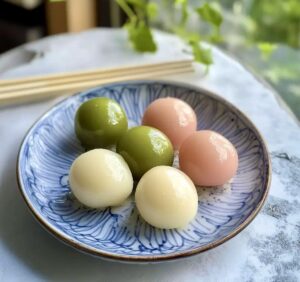
Easy Hanami Dango Recipe
- Total Time: 1 hour
- Yield: 4 1x
Description
Sweet sakura-inspired hanami dango brings Japanese springtime delights straight to your kitchen. Chewy pastel mochi balls create a delectable dessert celebrating cherry blossom season with simple ingredients and charming cultural traditions you can savor.
Ingredients
Main Ingredients:
- 1 1/3 cups (320 ml) joshinko rice flour (non-glutinous)
- 1 1/2 cups (360 ml) shiratamako sweet glutinous rice flour
- 1 1/3 cups (320 ml) hot water
Sweetening and Coloring Ingredients:
- 3/4 cup (180 ml) powdered sugar
- 1 teaspoon matcha powder
- 1 teaspoon water
Additional Coloring:
- 1 drop pink food coloring
Instructions
- Prepare bamboo skewers by submerging them in water to prevent potential splintering during cooking.
- Create a smooth dough by combining Joshinko rice flour, Shiratamako rice flour, and optional powdered sugar. Gradually introduce hot water while mixing, then knead until the texture resembles soft play-doh.
- Separate the dough into three equal portions. Transform one portion into pink by incorporating food coloring through thorough kneading. Create a green section by blending matcha powder with water and integrating it into another portion. Keep the third portion in its natural white state.
- Meticulously shape each colored dough into 12 uniform balls, ensuring each weighs approximately 20 grams, resulting in 36 total dango balls.
- Utilize a large pot of boiling water to cook the dango. Gently add white balls and cook until they float, then continue boiling for an additional 2 minutes. Immediately transfer cooked balls to an ice water bath to halt cooking. Repeat the process separately for pink and green balls to prevent color bleeding.
- Arrange the skewers by carefully threading one green, one white, and one pink ball onto each bamboo stick, creating a visually appealing tricolor presentation.
- Serve the hanami dango as is, or elevate the flavor profile by adding complementary accompaniments such as sweet soy glaze, red bean paste, or a delicate matcha drizzle.
Notes
- Flour Selection Opt for authentic Japanese rice flours like Joshinko and Shiratamako for traditional texture and authentic flavor.
- Color Intensity Use gel food coloring for more vibrant and consistent pastel shades without affecting dough consistency.
- Temperature Control Keep water at a gentle boil to prevent dango balls from breaking or becoming too soft during cooking.
- Dietary Adaptations Substitute powdered sugar with monk fruit sweetener for low-sugar version or use gluten-free rice flour alternatives for sensitive diets.
- Prep Time: 45 minutes
- Cook Time: 15 minutes
- Category: Desserts, Snacks
- Method: Boiling
- Cuisine: Japanese
Nutrition
- Serving Size: 4
- Calories: 183 kcal
- Sugar: 18 g
- Sodium: 2 mg
- Fat: 0.2 g
- Saturated Fat: 0 g
- Unsaturated Fat: 0.1 g
- Trans Fat: 0 g
- Carbohydrates: 44 g
- Fiber: 1 g
- Protein: 1.5 g
- Cholesterol: 0 mg

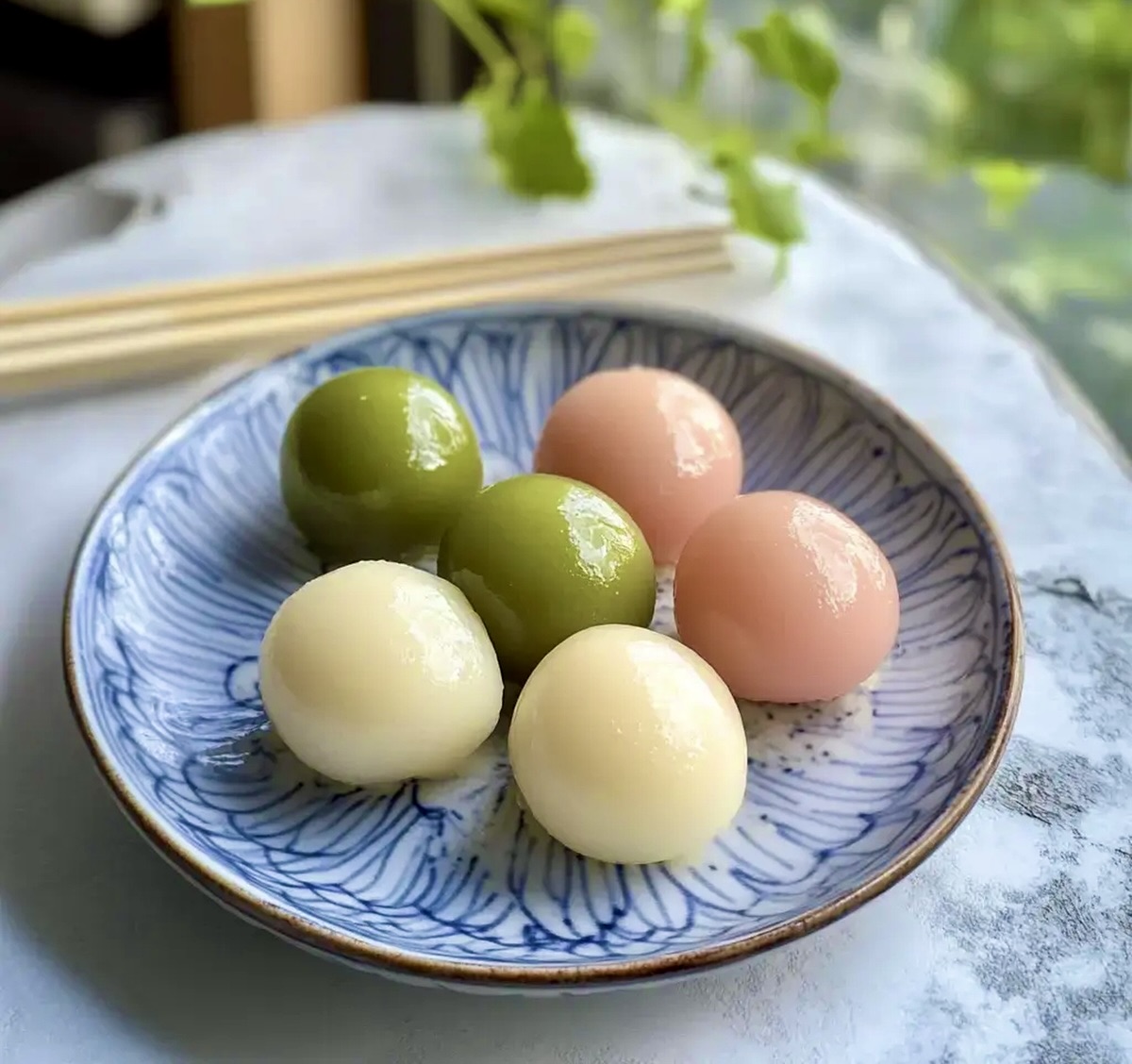
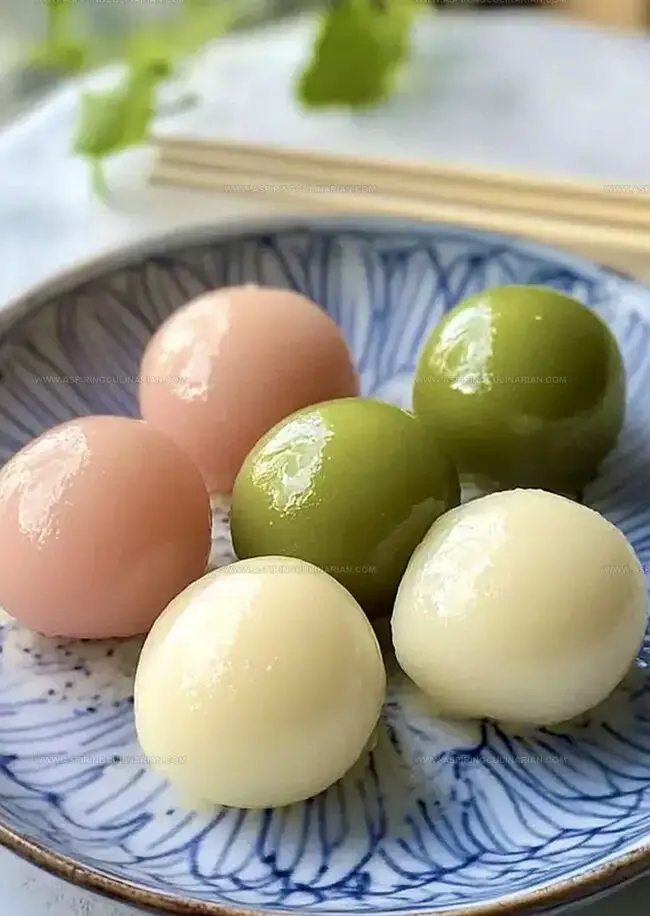
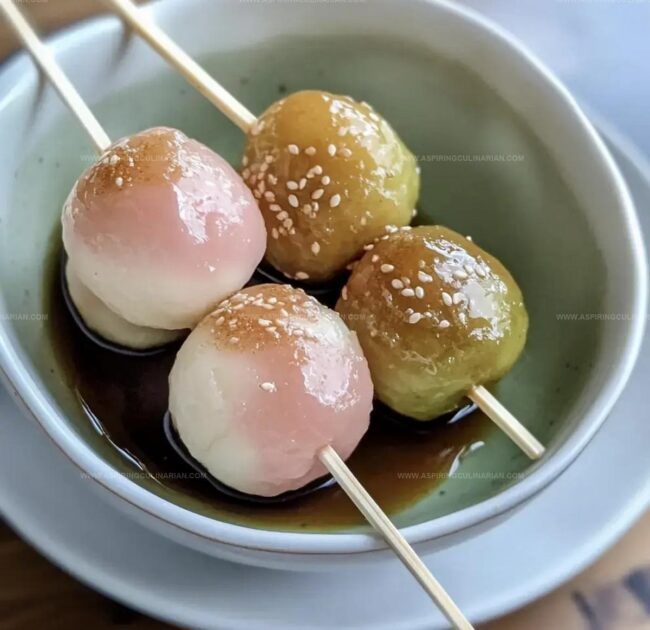
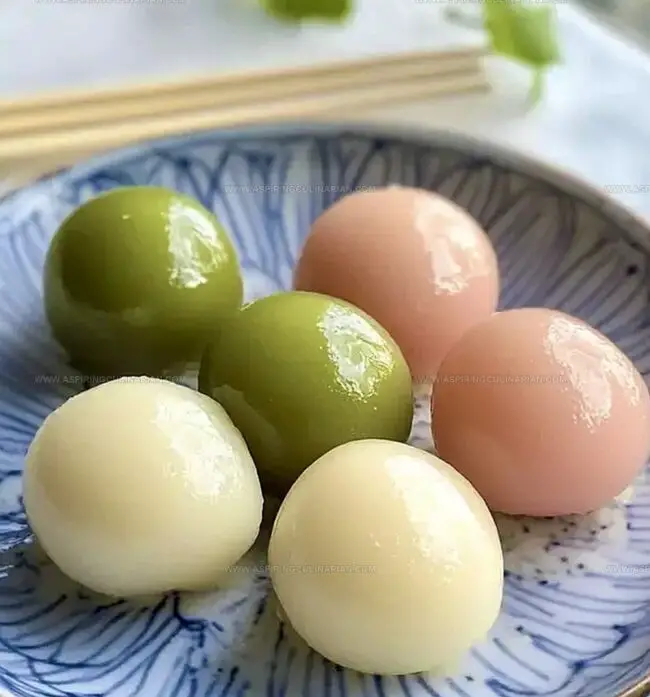
Nathaniel Brooks
Founder & Recipe Developer
Expertise
Farm-to-table cuisine, Seasonal recipe development, Culinary storytelling
Education
Ivy Tech Community College – Indianapolis, IN
Culinary Arts / Hospitality Administration & Events
Focused on hands-on training in classical and modern culinary techniques.
Nathaniel’s story starts in the foothills of the Appalachian Mountains, where farm stands, backyard gardens, and old family recipes shaped his love for real food. After graduating from Ivy Tech Community College in Indianapolis, he spent years working in farm-to-table kitchens, learning how to turn local, seasonal ingredients into something memorable.
Today, Nathaniel pours that same spirit into every single recipe on Aspiring Culinarian – recipes that feel real, comforting, and connected to the land. When he’s not in the kitchen, you’ll find him foraging wild herbs, chasing sunsets with his camera, or writing about the flavors that shaped his roots.